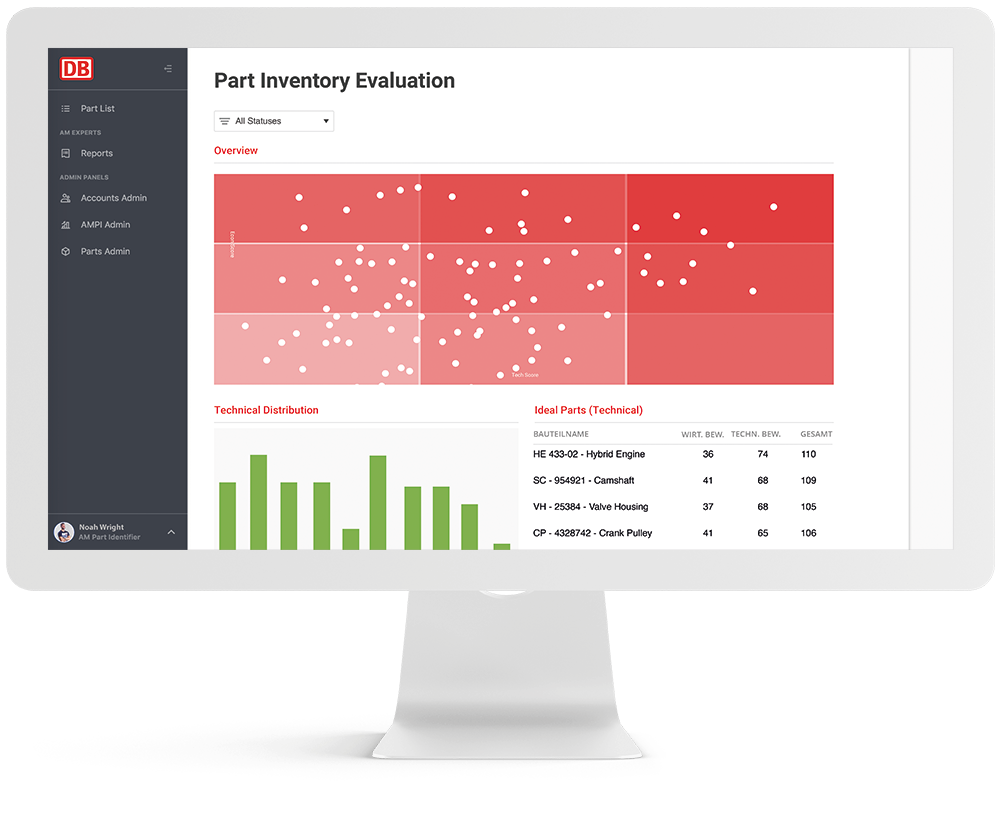3YOURMIND, a US-German software company specializing in creating digital inventories for 3D printed parts, announced that it has been awarded $2.5 million by the US Marine Corps’ (USMC’s) Advanced Manufacturing Operations Cell (AMOC). 3YOURMIND is sharing the contract with Phillips Corporation’s Federal Division, and the funds will go towards integrating 3YOURMIND’s parts identification software with the USMC System Command’s Digital Manufacturing Data Vault (DMDV).
3YOURMIND was among the first companies to offer parts identification software solutions for the AM sector, which allows users to greatly accelerate the process of determining whether manufactured parts are both suitable and desirable targets for 3D printing. Moreover, 3YOURMIND has long focused on scanning not just individual parts, but whole inventories of entire organizations, which is a critical advantage for the company in its work on the DMDV.
The DMDV, first announced by the USMC in 2021, is one of many similar projects by the US military branches to create repositories of all the mission critical parts that each branch is capable of producing with AM. 3YOURMIND and Phillips have already been working on projects related to the DMDV for a year, with this latest contract following upon the first one’s successful completion.
In the first year, according to 3YOURMIND, the two companies and the AMOC screened over 10,000 parts in the USMC catalog, and among other things, demonstrated that 50 parts had the potential to save at least 1000 days of lead time per part with 3D printing. Since there are about 32 million parts in the NATO catalog, trying to determine this for the entire military without AI would be impossible and, in turn, not worth it.
In the second year, 3YOURMIND and Phillips plan to expand on the first year of progress by integrating 3YOURMIND’s proprietary software with other software platforms used by the DMDV, including Product Lifecycle Management (PLM) software platform, PTC Windchill. Additionally, the group plans to incorporate 2D drawing analysis into the DMDV, which should be especially useful for reverse engineering enemy parts found on the frontlines of combat.

In a press release about the $2.5 million contract from the USMC, William Cuervo, 3YOURMIND’s VP of Sales, North America, said, “Although [AM] is well-known for cutting-edge innovations, I am encouraged by our work with AMOC and Phillips Corp. to enable the Marine Corps. to use additive to address more common technology and spare parts gaps. I am very excited for the opportunity for 3YOURMIND and Phillips Corp. Federal Division to enrich the quality of life of the warfighter by addressing these capability gaps and contribute to the operational readiness that the [USMC] prides itself on.”

This is exactly the right approach when it comes to the defense industrial base, as I explained in a post yesterday about JPB Système’s investment in metal binder jetting startup Addimetal. The military doesn’t need AM for cutting-edge innovations, at least not yet. AM is already the cutting-edge innovation, but precisely insofar as it facilitates new ways of producing the same old essential parts.
As with the rest of US and global heavy industry — because both depend on the US defense industrial base — the literal nuts and bolts are just as big supply chain issues as everything else. And, if anything, bigger supply chain issues, because no other project can go forward if access to the essentials is in question. AM will no doubt eventually be used to produce all sorts of things at scale, but only after the sector has proven it has mastered output of the basics.
Featured image courtesy of USMC via 3YOURMIND
Subscribe to Our Email Newsletter
Stay up-to-date on all the latest news from the 3D printing industry and receive information and offers from third party vendors.
You May Also Like
3D Printed Heat Spreader Could Improve Efficiency of Electronics
The low-hanging fruit for decarbonization has long been improving the efficiency of existing systems, hence the justification for LED lights and ENERGY STAR certified appliances. While such minor moves are...
3D Printing News Unpeeled: Marine Gearboxes, 3D Printed Motors and $1.7 Million in Seed Funding
UK based Equipmake just released their Ampere-220 e-axle system. The system, which is meant for high performance electric cars, was similar to one released on the Ariel HIPERCAR. It has...
CEAD Unveils 36-Meter-Long 3D Printer for Abu Dhabi’s Al Seer Marine
CEAD, a Dutch original equipment manufacturer dedicated to large-format 3D printers, has unveiled what it claims to be the world’s largest robotic arm-based 3D printer. At 36 meters long and...
3D Printed Biocomposites Could Help Reduce Marine Plastic Pollution
Concerns about the impact of plastic litter and microplastics in the oceans are at the forefront of environmental study. For decades, the marine environment has suffered from the degradation of...




































